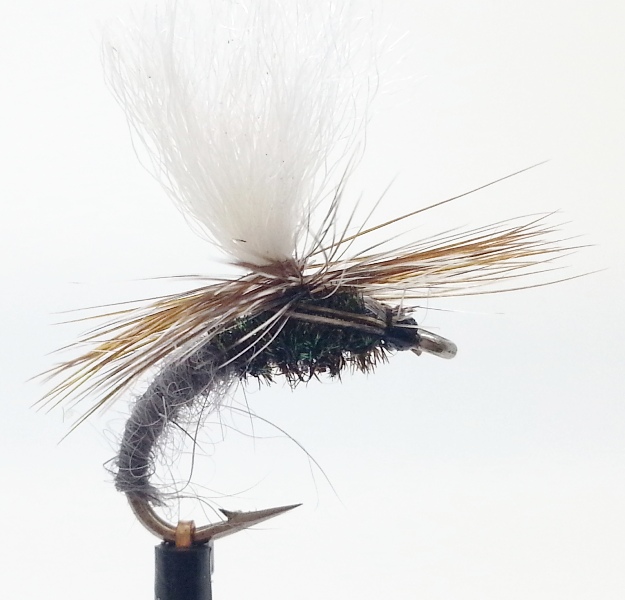Size is easier to see than detail.
Think of a monitor. Whatever the pixel count is: low, medium or high: the SIZE is identical. Color is identical. Motion is identical. What can vary is detail or the pixel count.
Can you tell the difference between 7X and 3X tippet by looking at it? I can. 7X is .004" and 3X is .008" inch. I can tell the difference easily from 2+ feet away. The difference is the same as the 0.004" you ask about. Do you think if I had 1/14 th the vision, I could tell the difference if I was 2 inches away?
Here's the deal. When the trout is feeding it is nose to fly to the artificial. How well the fish sees the fly depends on how smooth and clear the water surface is.
Trout see size, shape, color, motion but the detail is less than human vision. You can see size without seeing detail. If I pixilate a face, you can still see the size, shape, color but the detail is missing.
Here are images from an article on "How Trout See" by opthalmologist Gordon Byrnes, MD. in volume 21, issue 5, of Fly Fisherman Magazine, July 1990. pp 56.
This is what a human sees when looking at a fly from the fishes perspective.
This is what a fish sees at 3 inches before it decides to refuse or eat the fly. Note the it can see the size but not the detail of the image above. Detail is blurred but size is evident.
Now that I have posted the images above, allow me to use them to answer the OP's question:
The image in my post above is the best estimate of the BEST DETAIL a trout can see of an artificial fly. This is as good as it gets for a trout.
So the question is IF this is as good a look at a fly a trout will get, will a quill body as A.K. Best says be more effective than a dubbed body when conditions are not "perfect" as when there are riffles or micro riffles between the fish and the fly?
My opinion is that A.K. Best is making the error of not considering the difference between human vision and trout vision. My opinion is that the difference between a quill body and the "fuzziness" of a dubbed body is based on the ability to see fine detail which lacking even in up close vision for a trout. I am not saying it cannot make a difference in some conditions as in spring creeks but for 98% of fly fishers, I think not.
Here's the other side of the argument. If you think a quill body is always the best as AK Best does, then tie all your flies with quill bodies. Then you will never be "wrong". Because it takes longer for me to tie a quill body than a dubbed body, I would personally would rather have more flies in my box for the time spent tying.






